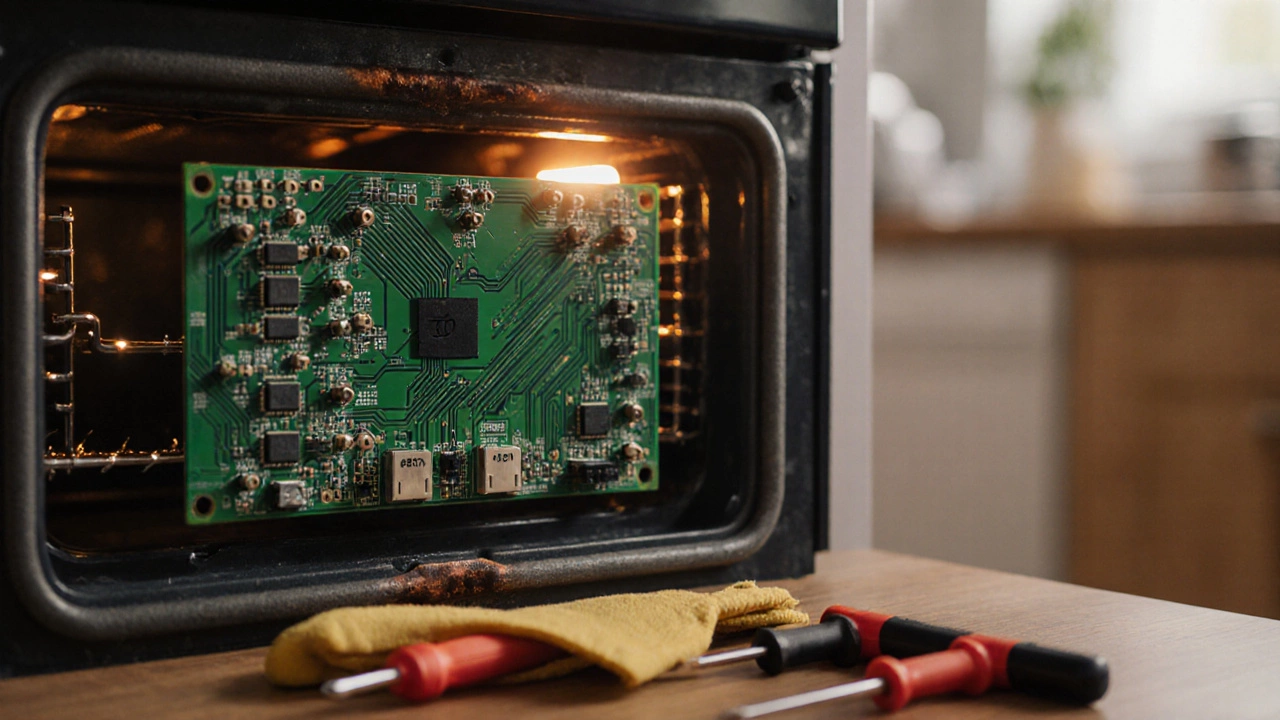
Learn when swapping an oven control board makes sense, how much it costs, DIY steps, and when to opt for a new oven instead.
When dealing with oven control board, the electronic module that tells an oven when to heat, cool or stay idle. Also known as oven PCB, it acts as the brain of an oven, the kitchen appliance that cooks food using heat, handling temperature settings, timing and safety checks. The board links the keypad, thermostat and heating elements, so any glitch can throw the whole unit off. Because of that, appliance repair, the service that restores faulty home devices to working order specialists focus heavily on diagnosing the control board before opening up the oven. Understanding how this component works saves time, cuts costs and helps you decide whether a simple reset will do or a full replacement is required.
A common question is how much a replacement will set you back. In 2025 the average oven control board price ranges from £120 to £250 for parts alone, depending on brand, model and whether it’s a genuine OEM piece or a third‑party alternative. Labor adds another £80‑£150 if you call a professional, so the total can easily top £300 for high‑end ovens. Factors that swing the price include the oven’s age, the board’s complexity (some units have dual‑board systems) and the availability of spare parts. DIY enthusiasts often save on labor, but they need a multimeter, proper safety gear and the right wiring diagram. A typical diagnostic routine starts with unplugging the oven, checking for visible burnt marks, and using the multimeter to test continuity on the board’s main connectors. If the board fails the continuity test or shows intermittent voltage, replacement is the safe route.
Life expectancy for a control board isn’t set in stone, but most last 5‑10 years under normal use. Frequent power surges, faulty wiring or a broken thermostat can shorten that span dramatically. Warning signs include error codes on the display, the oven refusing to heat, or inconsistent temperature readings. Regular maintenance—like tightening loose terminal screws and keeping the board clean from grease—can push the lifespan toward the higher end. When you spot a problem, the first step is always a quick reset: turn off the power at the circuit breaker for a minute, then restore it. If the issue persists, the next move is a deeper inspection or a call to a qualified appliance repair, service that can safely replace electronic components professional. Below you’ll find a curated collection of articles that walk you through resetting a washing machine, unblocking a kitchen extractor fan, calculating replacement costs, spotting a burned‑out oven element and more. Dive in to get the hands‑on guidance you need to keep your kitchen humming.

Learn when swapping an oven control board makes sense, how much it costs, DIY steps, and when to opt for a new oven instead.